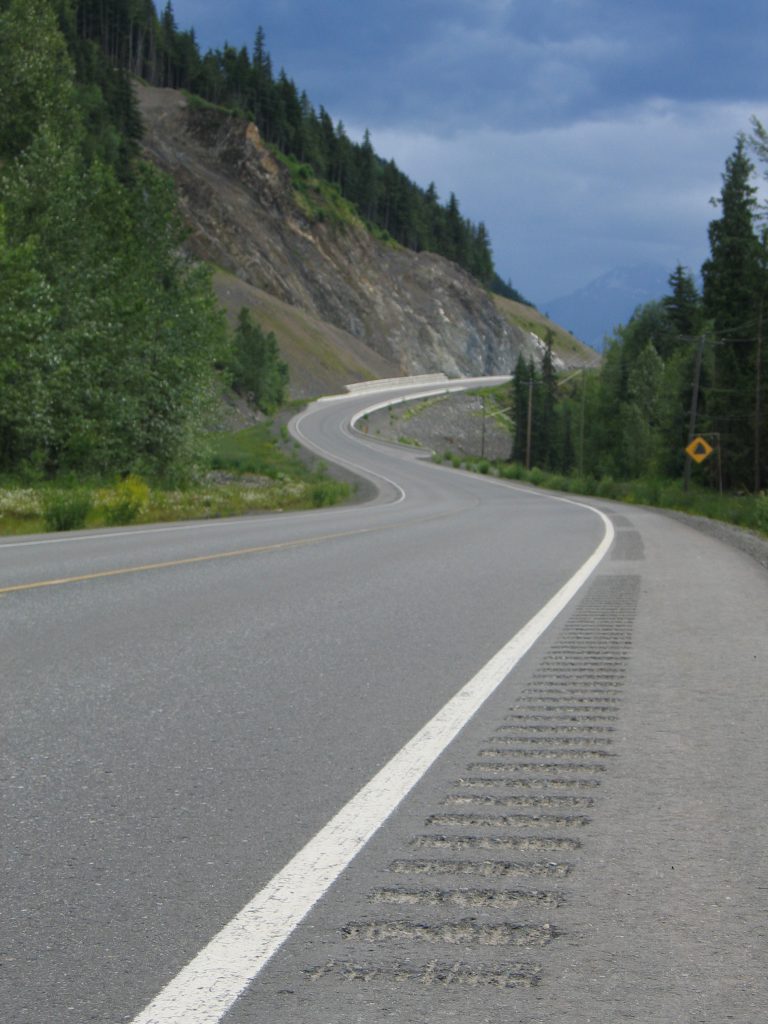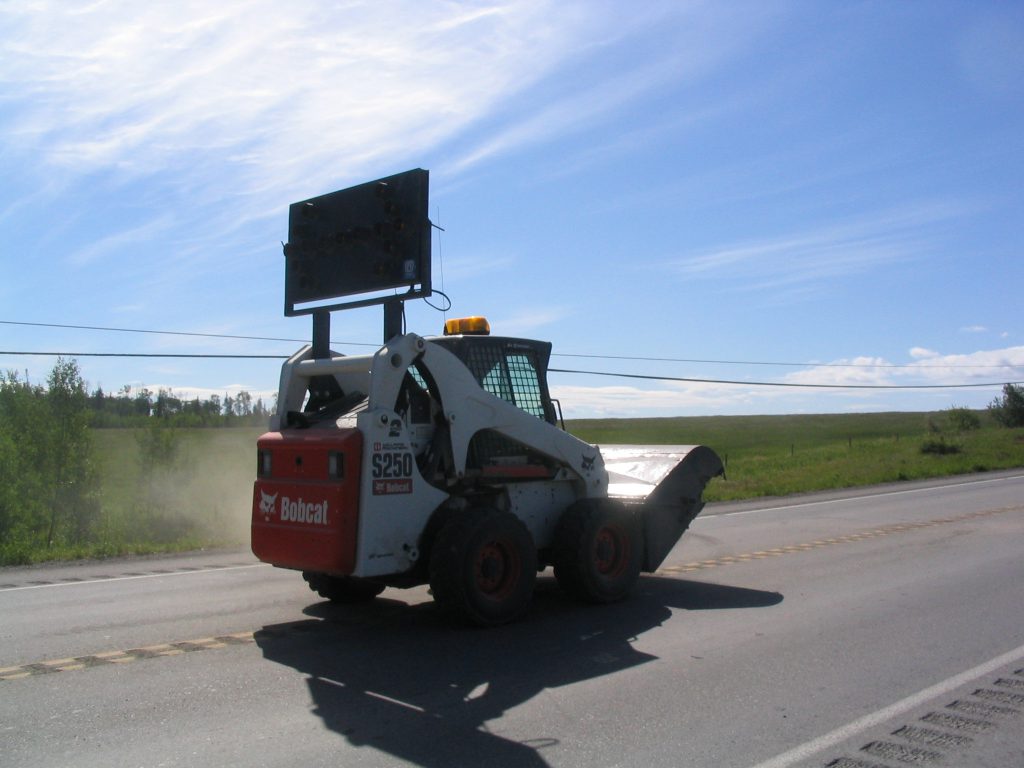
Vrrrrrrrrrrrrrrrrrrrrrrrrrrr.
You might have heard that noise and felt a vibration while driving on a highway and thought: “What is that noise? Do I have a flat tire?” While you may be startled, what you experienced was likely a rumble strip, designed to help keep motorists travelling safely on our highways.
Rumble strips are shallow grooves milled into the centreline and the shoulder of a roadway. If your vehicle crosses over the rumble strip, you will feel and hear the vibration of the groove and know that you have crossed the line. This “gentle” reminder gets you to steer in the correct direction and stay safe.
The Ministry of Transportation and Infrastructure began using rumble strips in 1996, and since that time, has installed more than 5,000 kilometres of centreline and shoulder rumble strips throughout the province. That is a lot of grooving!
Centreline rumble strips are placed in “no passing zones” along undivided rural two- lane, three-lane or four-lane highways throughout the province. Shoulder rumble strips are placed along rural roadways, where there is adequate shoulder width. A comprehensive study conducted by UBC and ICBC found that rumble strips installed on rural two-lane highways greatly reduced severe collisions. For example, shoulder rumble strips reduced collisions where motorists went off the road to their right, by 22.5 per cent. Centre line rumble strips on undivided rural highways resulted in 29.3 per cent fewer head-on collisions and collisions where the driver went off the road to their left.
With this kind of success, the Ministry of Transportation and Infrastructure continues to install rumble strips on BC highways. Get ready to rumble!

TranBC Trivia:
Shoulder rumble strips are 0.3 metres wide and are installed on shoulders that are at least 1.5 metres wide, to ensure there’s a smooth portion of shoulder for cyclists.
Between each 15-metre set of rumble strips, there is a 3.5-metre gap to allow cyclists to smoothly leave the shoulder, if they wish.
Rumble strips idea was invented by a bridge engineer who worked for PennDOT. Somehow that history is not even available in Google. PennDOT was the first state which used rumble strips.
Thanks for sharing that historical information.
Where do BC highways have warning rumble strips that cross the highway? Are they used anywhere to warn of school crossing zones or speed changes?
Hi there Bill – thanks for your question. We are not aware of rumble strips being used as crosswalks – only alongside roadways as they are most effective when being driven over on the vertical instead of the horizontal. Hope this information is helpful.
Why can’t a different pattern be used for the centre line and fog line? Perhaps whoever specified them has never driven on a winding highway covered with snow when it can be VERY difficult to guess which rumble strip you are on?
Thanks for the suggestion Nick! We will share it forward on your behalf to our engineers. 🙂
Rumble-strips would be excellent at pedestrian crosswalks and along the edge of cycle-paths.
They would probably provided added security and traction in winter.
Well the thing is, by the time you feel the rumble, you already hit the pedestrians
These are an offshoot of the original “Mexican stops”, which were corrugated metal plates installed ahead of stop signs.
They would also make cheap and excellent separators to protect PEDESTRIAN CROSSWALKS and BICYCLE LANES, instead of the expensive and impractical low walls now being asked for.
It is likely they would improve security and traction in winter.
I say install them on all roads with speed limits over 50 km/h. On roads with lower speeds, it’s either in the urban area or in a place where cyclists can mix safely on the road itself assuming there is a low enough volume, otherwise, it would have a separate path anyway. They are 30 cm wide, meaning that you could add a bit of a paved shoulder in the same way that this: http://www.mnt.ee/failid/Safe_Road_Design_manual_FINAL.pdf (with undivided speed limits actually being made 70 km/h roads, 80 km/h was later found to be too dangerous, reduce clear zone width by 1.5 metres accordingly) does. Bicycles shouldn’t even be on the road with cars on most even county roads, never on a provincial highway, not even with a shoulder
Hi Robert,
Thanks for connecting with us here and for your feedback. We have shared your comment forward with our traffic engineers for consideration.
I would like to view the study conducted by ICBC and UBC. The link is broken. If possible, please email me a copy of this article. Kind regards!
Hi Sophia,
Thanks for bringing that broken link to our attention. We have fixed it and here is the link: http://www.icbc.com/road-safety/community/Documents/prog_report_RS22A.pdf